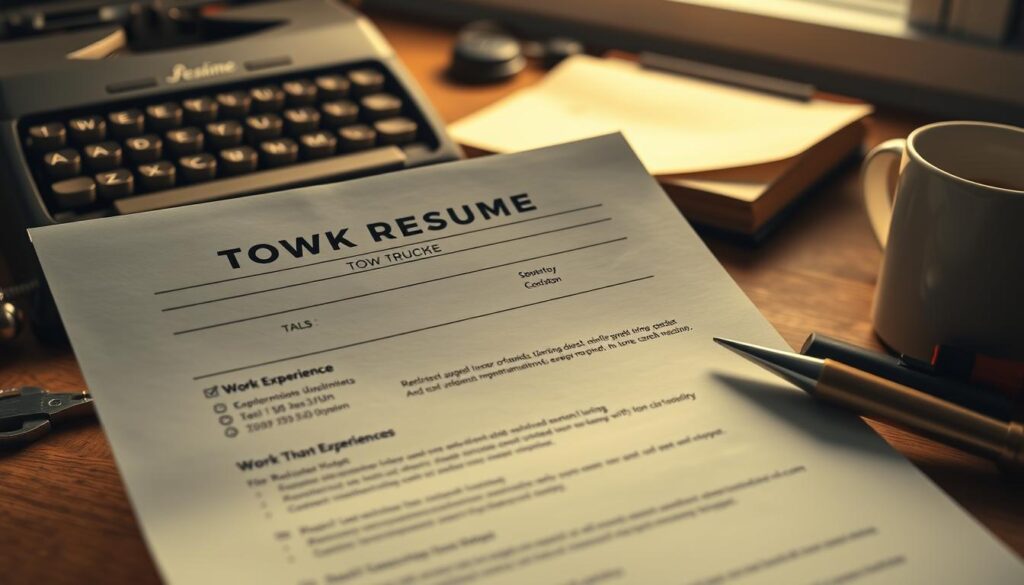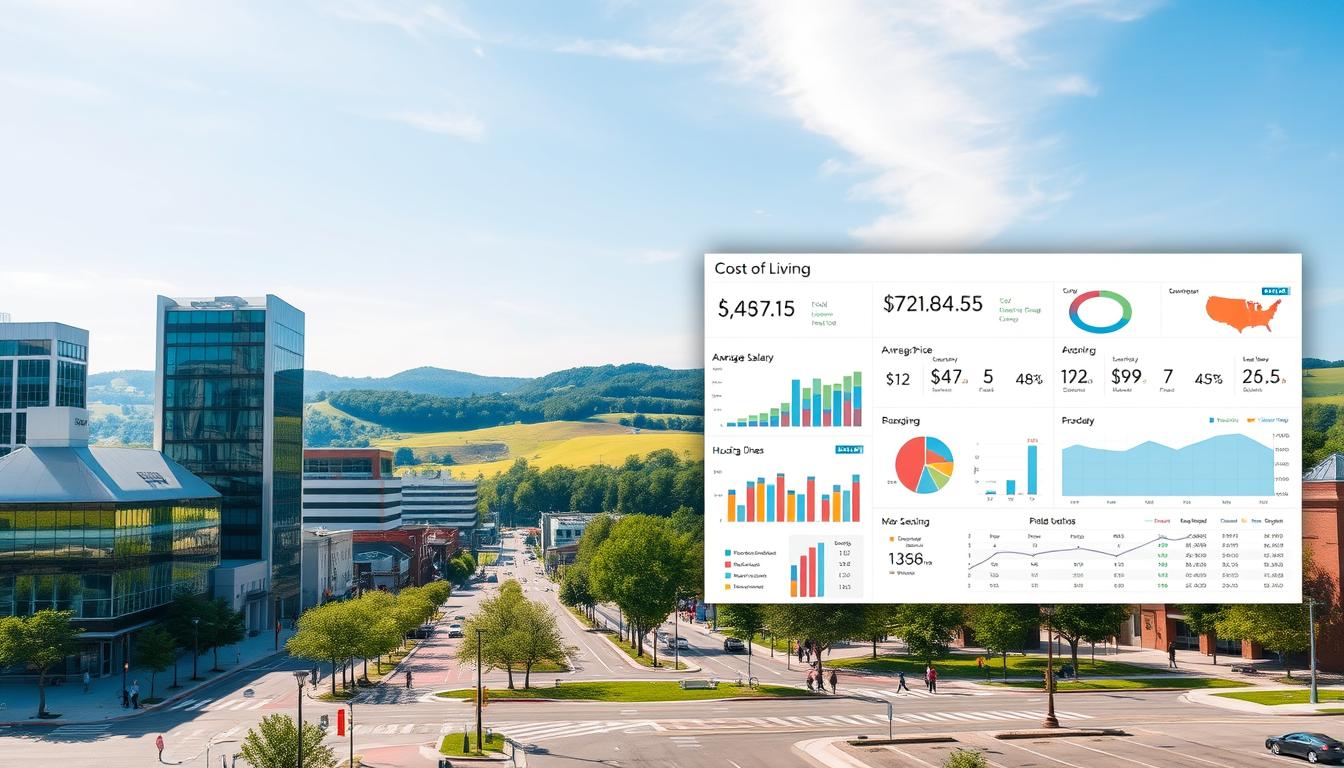Over 1 in 3 tow truck drivers will leave their roles by 2025 for higher-paying opportunities. This turnover creates massive demand for new workers, with 5.5% job growth and average salaries hitting $42,500 annually. But breaking into this field requires more than just a driver’s license.
You’ll need to master certifications, physical exams, and clean driving record requirements while competing against experienced candidates. That’s where tools like RoboApply’s AI resume builder and ATS optimizer become essential for standing out in applications.
This guide walks through every step – from securing your Commercial Driver License to accing interviews. You’ll learn how modern tech streamlines drug screenings, background checks, and even daily tasks like emergency roadside assistance.
Key Takeaways
- Tow truck driver roles offer stable pay ($42,500 average) with 5.5% projected job growth through 2025
- Basic requirements include age 18+, clean driving history, and passing physical/drug tests
- RoboApply’s AI tools optimize resumes for applicant tracking systems used by towing companies
- Critical certifications include CDL licenses and EPA safety training
- Daily tasks range from vehicle recovery to customer service during lockouts
Understanding the Tow Truck Driver Role in 2025
Modern towing professionals balance technical skills with human interaction. Every shift brings new challenges requiring quick thinking and precision. Let’s break down what this career truly involves.
Key Responsibilities and Daily Tasks
Your day starts with dispatchers routing you to stranded vehicles. You’ll operate hydraulic lifts and wheel-locks to secure cars, then navigate busy roads while monitoring loads. Physical stamina matters – lifting 50+ pound chains and working in rain/snow becomes routine.
Customer interactions separate great drivers from good ones. One minute you’re calming a parent locked out with kids in the car, the next you’re explaining repair options to a frustrated commuter. Soft skills prove as vital as technical know-how.
Job Outlook, Demand, and Salary Trends
The industry needs 18,400 new operators by 2025 according to BLS data. High turnover creates opportunities, with entry-level pay starting at $18/hour plus overtime. Specialized roles like heavy-duty recovery offer $28-$35 hourly.
“Towing isn’t just moving cars – it’s solving emergencies while keeping roads safe.”
You’ll file digital reports using mobile apps instead of paper logs. Modern fleets track routes through GPS, requiring basic tech literacy. This blend of old-school mechanical work and new technology defines the 2025 towing landscape.
Meet the Basic Requirements for Tow Truck Drivers
Starting a career in this field means meeting foundational criteria that prove your readiness for the role’s demands. Employers prioritize candidates who demonstrate responsibility through documented qualifications and personal history.

Age, License, and Clean Driving Record
While 18 is the legal minimum age, most companies hire drivers aged 21-25. This preference stems from needing candidates with proven maturity and driving experience. You’ll need a valid state-issued driver license and a spotless record – even minor speeding tickets can raise red flags.
Employers typically reject applicants with more than two moving violations in three years. Your clean driving record shows you can safely operate heavy equipment in high-pressure scenarios.
Background, Drug Screening, and Physical Exams
Comprehensive background checks verify your trustworthiness since you’ll handle vehicles worth thousands. Failed checks for theft or fraud often lead to automatic disqualification.
Mandatory drug tests ensure sober decision-making during emergencies. Physical exams assess vision (20/40 minimum), hearing, and stamina for lifting 50+ pounds daily. One industry manager notes:
“We need drivers who can hoist chains in freezing rain at 3 AM – health screenings aren’t just paperwork.”
You’ll also need stress management skills for navigating traffic jams and calming distressed customers. While past minor violations won’t always disqualify you, a flawless record maximizes opportunities with top firms.
Essential Skills and Training for Tow Truck Drivers
Success in this field demands a unique combination of technical expertise and interpersonal abilities. Employers prioritize candidates who demonstrate competence in vehicle systems while maintaining professionalism during high-stress situations.
Automotive and Technical Know-How
You’ll need to recognize common engine issues and electrical failures. Training covers diagnostics for dead batteries, transmission problems, and brake system failures. This knowledge helps explain repairs to customers and suggest trusted mechanics.
Mastering specialized equipment operation proves critical. You’ll practice using wheel lifts, hydraulic boom controls, and flatbed systems. Many companies require 40+ hours of hands-on instruction before solo assignments.
On-the-Job Experience and Safety Protocols
Apprenticeships provide real-world practice in vehicle recovery scenarios. You’ll learn proper chain placement for different car models and weight distribution techniques. Safety training emphasizes OSHA standards for accident prevention.
Physical conditioning remains vital for handling 100-pound tow bars and working in extreme weather. One fleet manager advises:
“Treat every recovery like it’s your own vehicle – precision prevents costly mistakes.”
Navigation skills develop through GPS training and local route memorization. You’ll optimize paths to accident sites while avoiding low bridges or weight-restricted roads. Consider using professional resume examples to showcase these technical abilities effectively.
Customer service training teaches de-escalation tactics for frustrated motorists. Role-playing exercises prepare you for insurance negotiations and police interactions. These soft skills often determine promotion opportunities within companies.
Optimizing Your Resume with RoboApply
Your resume acts as the first test drive for hiring managers. RoboApply’s tools transform generic applications into targeted documents that showcase your value. Let’s explore how to craft materials that accelerate your career growth.

Leveraging the AI Resume and Cover Letter Builder
1. Start with Smart Formatting
RoboApply’s AI Resume Builder structures your driving experience and mechanical knowledge using industry-approved layouts. The platform auto-sorts certifications like CDL licenses and safety training into prioritized sections.
2. Target Towing Roles
Transportation-specific templates highlight physical stamina and accident response skills. One user reported landing interviews at 3 major companies after emphasizing their clean record using RoboApply’s keyword optimization.
3. Showcase Transferable Skills
Did you handle customer complaints in retail? The tool reframes this as conflict resolution expertise for roadside scenarios. Review professional resume examples to see how others translate past roles.
4. Ace the Final Checks
RoboApply’s grammar scanner catches errors that might disqualify safety-focused applicants. The ATS optimizer then tests your document against systems used by 89% of towing firms.
“A polished resume proves you treat vehicles as carefully as paperwork.”
By combining technical specs with human-centric details, you’ll demonstrate readiness for this physically demanding job. RoboApply ensures your application mirrors the precision needed on the road.
How to Land a Tow Truck Driver Job in 2025
Top candidates use smart tools to navigate today’s hiring landscape. RoboApply’s features help you cut through the noise with precision targeting and automated efficiency.
Tailoring Your Application with ATS Optimizer
Major employers like AAA and Copart use automated systems to filter 72% of resumes. RoboApply’s ATS Optimizer scans your document for 15+ critical keywords – “vehicle recovery” and “CDL certification” get prioritized. The tool reformats your experience to match each company’s preferred layout.
One user landed interviews at 3 national towing companies by highlighting accident response times. The system automatically adjusts phrasing based on job descriptions, ensuring your application speaks the employer’s language.
Using RoboApply's Smart Recruitment Features
The platform’s job tracker organizes opportunities across 50+ employers. You’ll see real-time updates from Mossy Automotive Group to Caliber Collision. Set alerts for night/weekend shifts at local truck dealerships.
RoboApply’s CRM reminds you to follow up with Bobby & Steve’s Auto World hiring managers every 14 days. The Chrome extension auto-applies to roles matching your CDL class and service area. As one hiring manager notes:
“Candidates who customize applications show they understand our roadside assistance priorities.”
Review HR manager resume examples to adapt leadership skills for dispatch roles. Filter searches by employer type – insurance companies need different credentials than collision centers. This approach helps you dominate both part-time and full-time openings.
Gaining a Commercial Driver's License (CDL) and Certifications
Proper credentials prove your ability to handle heavy vehicles safely. States require specific qualifications based on equipment weight and recovery scenarios. Let’s outline the essential licenses and specialized training programs.
Steps for CDL Training and Testing
1. Complete state-approved education
Enroll in a 4-6 week CDL program covering pre-trip inspections and load security. North Carolina mandates 160 classroom hours for commercial driver license applicants, even for light-duty tow truck operations.
2. Pass written knowledge exams
Study air brakes systems and combination vehicle rules. Testing centers assess your understanding of cargo weight limits through 50-question assessments. Many programs offer practice tests through mobile apps.
3. Demonstrate practical skills
Schedule road tests showcasing parallel parking and emergency braking. Examiners evaluate your ability to maneuver 26,000+ pound vehicles through tight spaces. Bring your own properly insured truck if possible.
Overview of Certification Levels in Towing
Class A CDL
Required for operating tractor-trailers and heavy haulers. Allows towing vehicles over 10,000 pounds when combined with trailers. Most versatile license for interstate recovery work.
Class B CDL
Covers single vehicles above 26,000 pounds. Ideal for medium-duty wreckers and flatbeds. Many employers prefer this certification for local accident response teams.
Class C CDL
Needed for hazardous material transport or passenger vehicles. Less common in towing, but useful for specialized fuel tanker recovery. Pair with certification-focused resume tools to highlight these credentials effectively.
FAQ
What’s the minimum age requirement for tow truck drivers?
Most states require drivers to be at least 18-21 years old. Companies operating medium/heavy-duty trucks often mandate a minimum age of 21 due to commercial driver license (CDL) requirements and insurance policies.
Do I need special certifications beyond a driver license?
While not always mandatory, certifications like Towing & Recovery Association of America (TRAA) credentials or WreckMaster training boost employability. Some states require specific endorsements for operating heavy-duty tow trucks.
How clean does my driving record need to be?
Employers typically require 3-5 years of accident-free history. Major violations like DUIs or reckless driving charges within the past 5 years often disqualify candidates. Use RoboApply’s Driving Record Analyzer to assess your eligibility.
What physical demands should I expect?
You’ll regularly lift 50+ pounds, work in extreme weather, and maneuver heavy equipment. Many companies require passing a DOT physical exam proving you can safely perform these tasks.
Can I get hired without prior towing experience?
Entry-level positions exist, but you’ll need proven mechanical aptitude. Highlight any automotive repair, roadside assistance, or equipment operation experience. RoboApply’s Skill Matcher helps translate non-towing experience into relevant qualifications.
How does a CDL affect job prospects?
A Class B CDL is essential for operating medium/heavy wreckers. Drivers with CDLs earn 18-23% higher wages on average and qualify for more positions. Our CDL Prep Toolkit simplifies license acquisition.
What safety gear do companies provide?
Employers typically supply ANSI-certified reflective vests, steel-toe boots, and traffic cones. You’ll need to demonstrate proper use during interviews. Document any OSHA or safety training in your RoboApply profile.
How do I handle accident scenes legally?
Training covers local traffic laws and police protocols. You’ll learn proper documentation, chain-of-custody procedures, and how to secure hazardous materials. Many states require annual recertification.


















